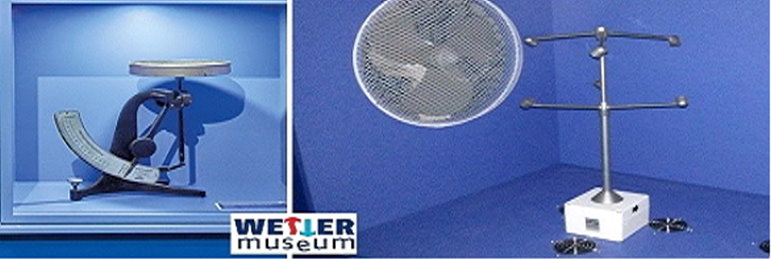"Water Talk Lusatia - How to continue with the water in the region?"
Evaporation as a physical phenomenon - the transition of a substance from the liquid to the gaseous state without reaching the boiling temperature - has been known with respect to water for thousands of years, was interpreted and explained by Aristotle in the "Meteorologica", the oldest closed treatise on atmospheric and hydrological questions, which largely accurately described evaporation, condensation with decreasing temperature, cloud formation as well as precipitation rain, snow, dew and frost.
Also in the comparatively more recent history of science - the instrumental phase - the question of quantitative recording of evaporation was quite present, even if it was not part of the standard equipment of weather observatories, but rather left to specialized institutions, especially those with proximity to agricultural and forest meteorology. In the last decades, with the continuous development of numerical prediction models, the importance of evaporation measurement or latent turbulent heat flux increased insofar as the latter is part of the energy balance at the Earth's surface and must be taken into account in modern weather models.
The measurement technique (historically: e.g. Wild's balance, evaporation meter according to Piche, later e.g. lysimeter or evaporation kettle, today also by means of eddy covariance techniqueor method) and the data obtained with it were always also the starting point of parameterization attempts by means of closely measured weather parameters. This will also be discussed.
By the way, coming from Lindenberg (where Richard Aßmann worked in later years, before that he earned merits for the aspiration psychrometer around 1885), it has to be explained, of course, that the evaporation at the humid thermometer of the psychrometer is a decisive precondition for an accurate humidity measurement. This also makes it immediately clear that evaporation occurs when the gas phase above the liquid is not yet saturated with vapor.
With this knowledge of the influence of vapor pressure gradients, temperature and radiation influences and their change in climate change, it should finally be possible to present and discuss questions of the further development of evaporation over various land uses (including water surfaces) and future groundwater recharge in an overview.
Link for livestream:
https://b-tu.webex.com/b-tu/j.php?MTID=mcccbcc6bb0c7dccdca71732f00622916
Date comment:
Veranstalter: BTU Cottbus-Senftenberg und Wasser-Cluster-Lausitz e.V.
Ort: Seminarraum 3 im ZHG sowie Online Livestream
Referent: Dr. Bernd Stiller (Museum für Meteorologie und Aerologie Lindenberg) - (im Arbeitsleben u. a. Dr. Schulz & Partner Gm
Venue
Seminarraum 3
Zentrales Hörsaalgebäude
(ZHG)
Zentralcampus
Konrad-Wachsmann-Allee 3
03046 Cottbus

